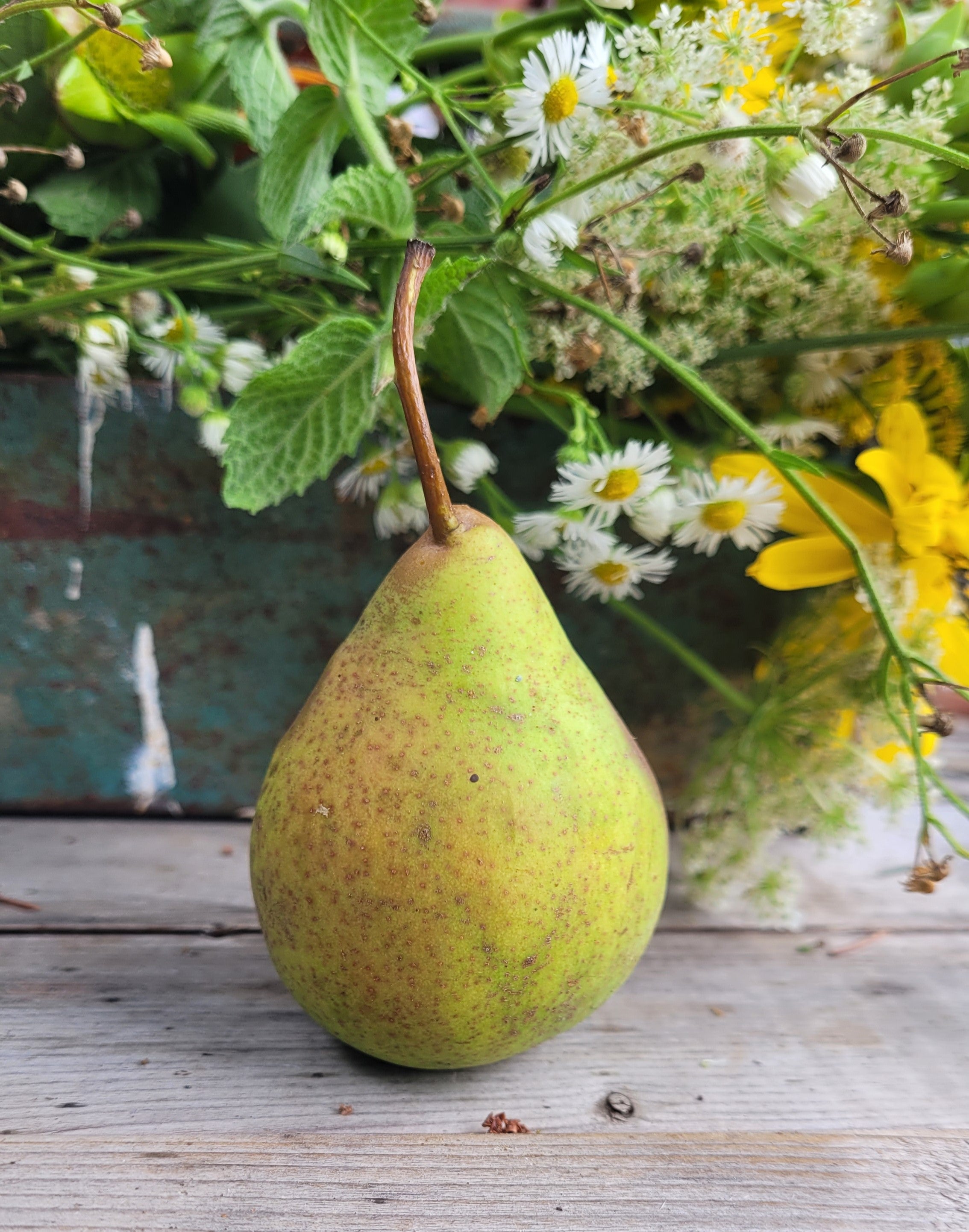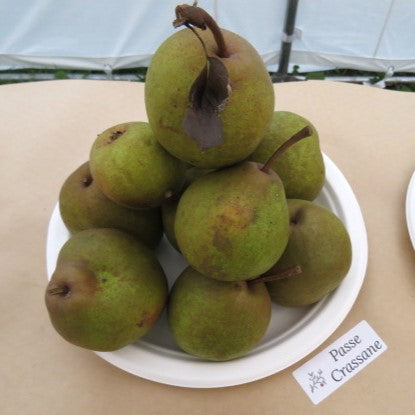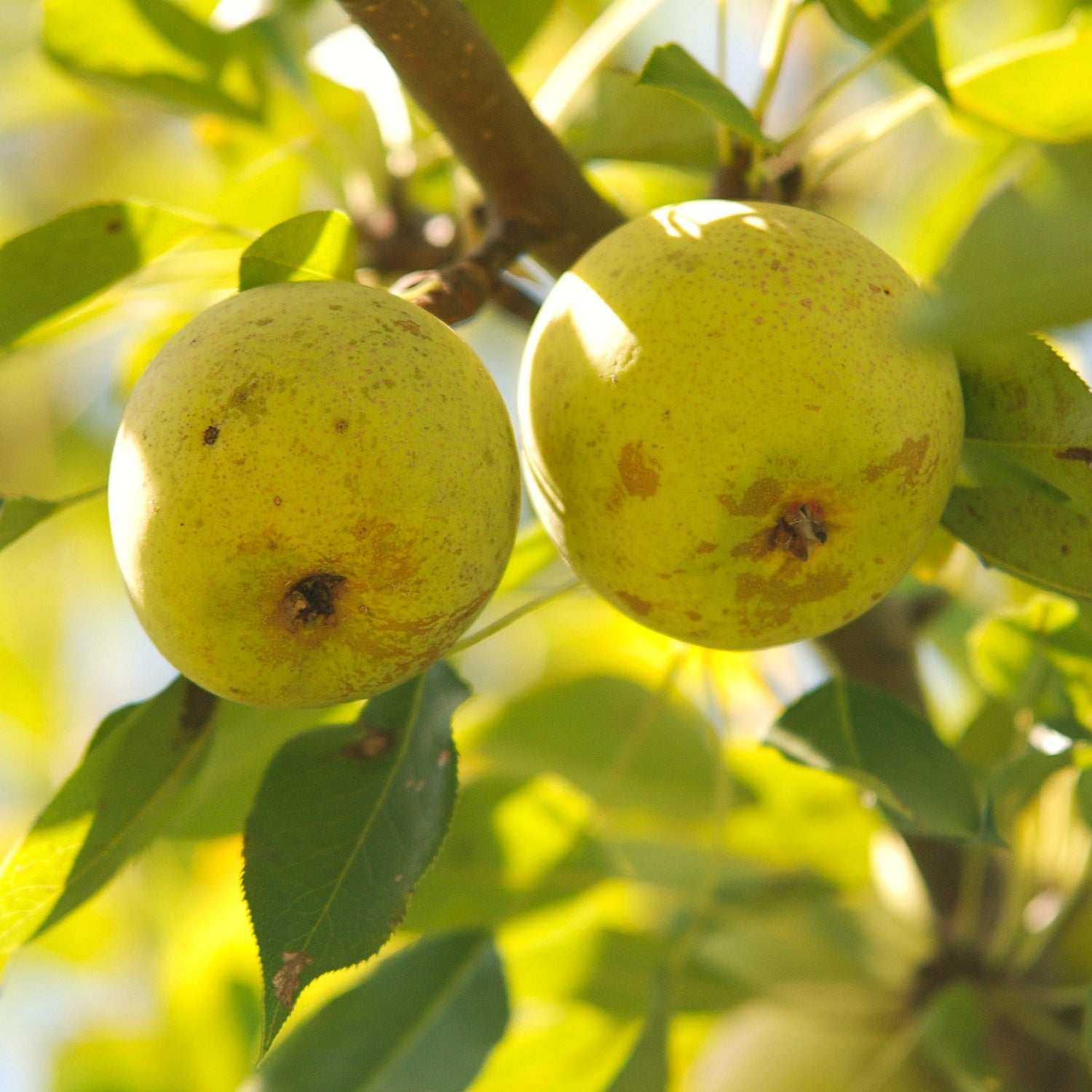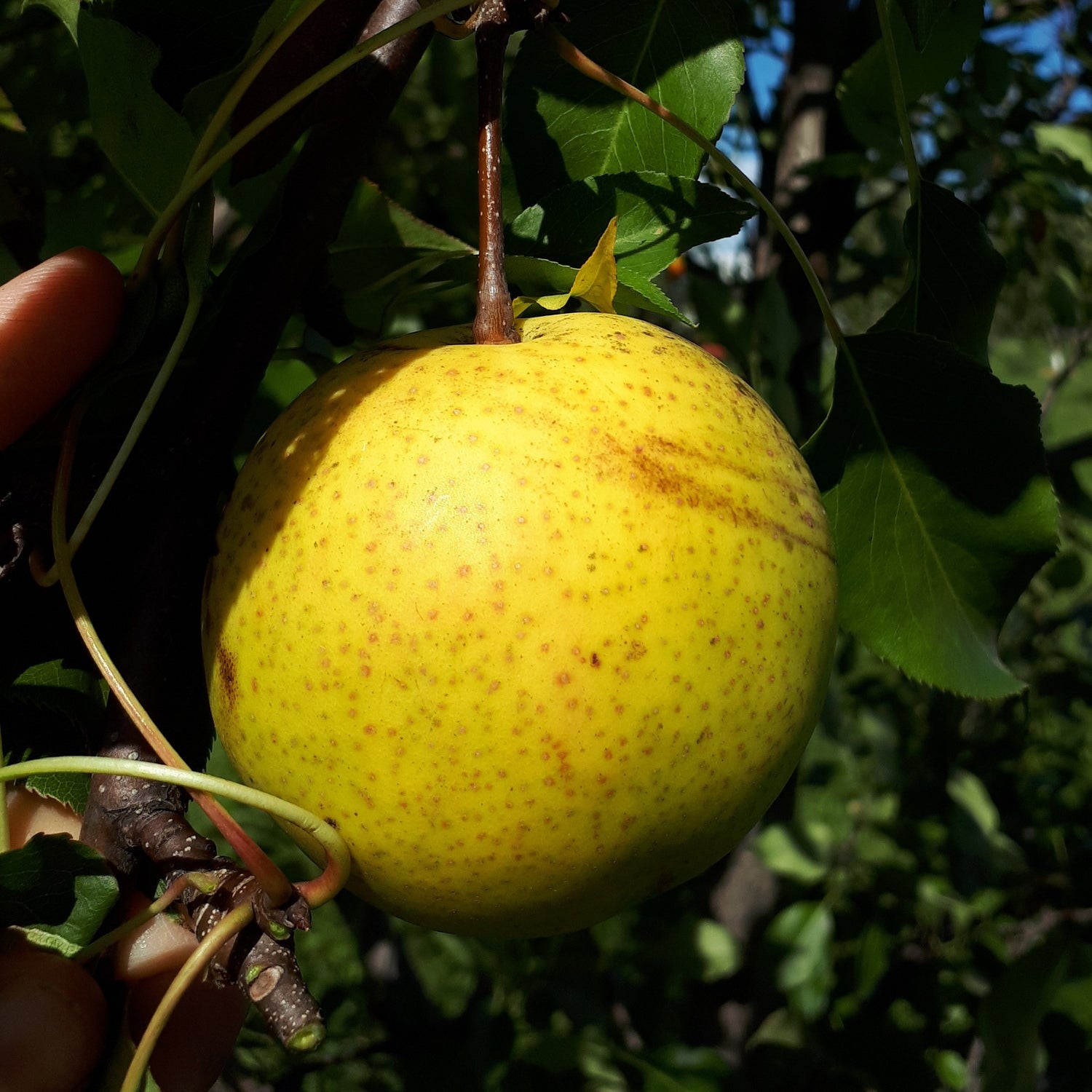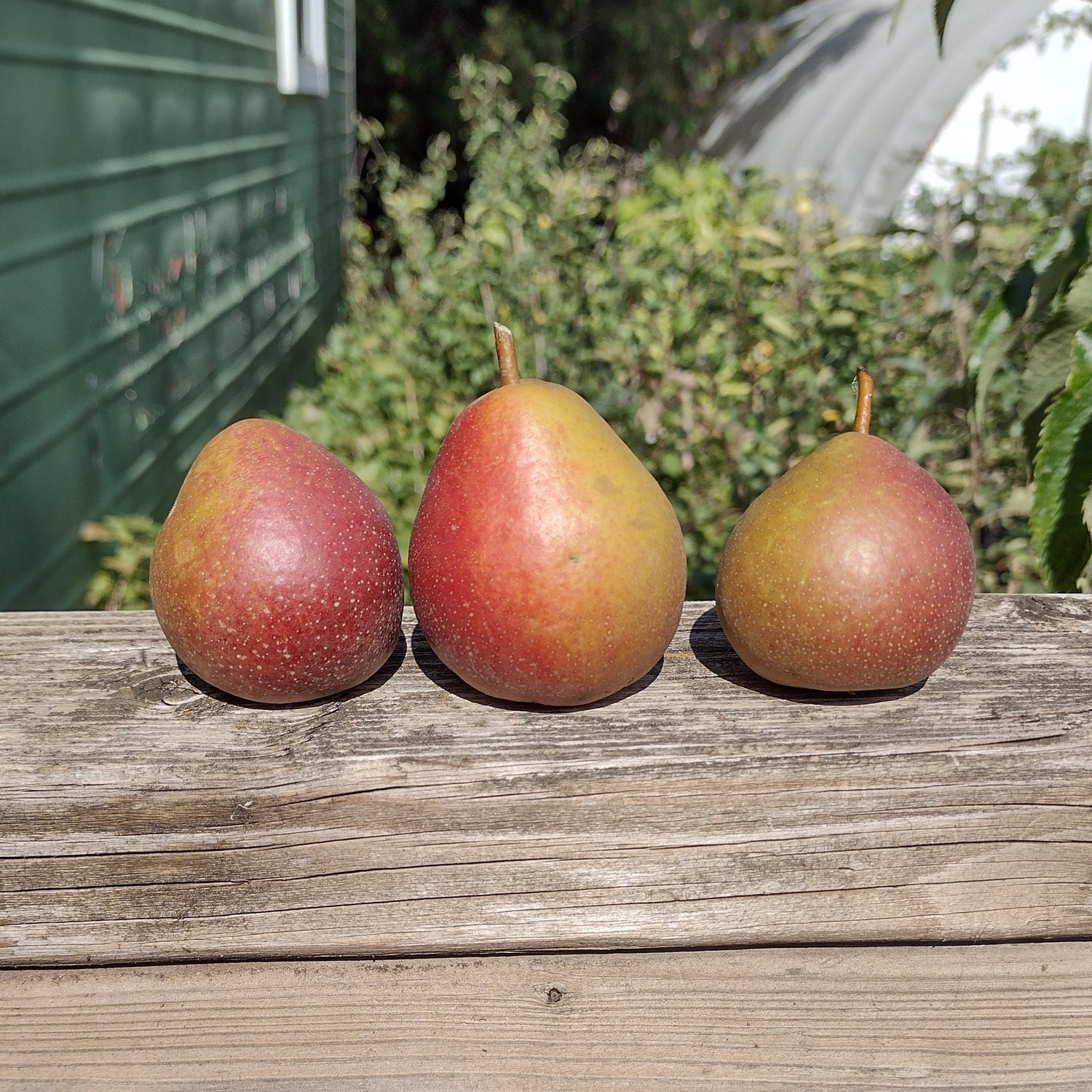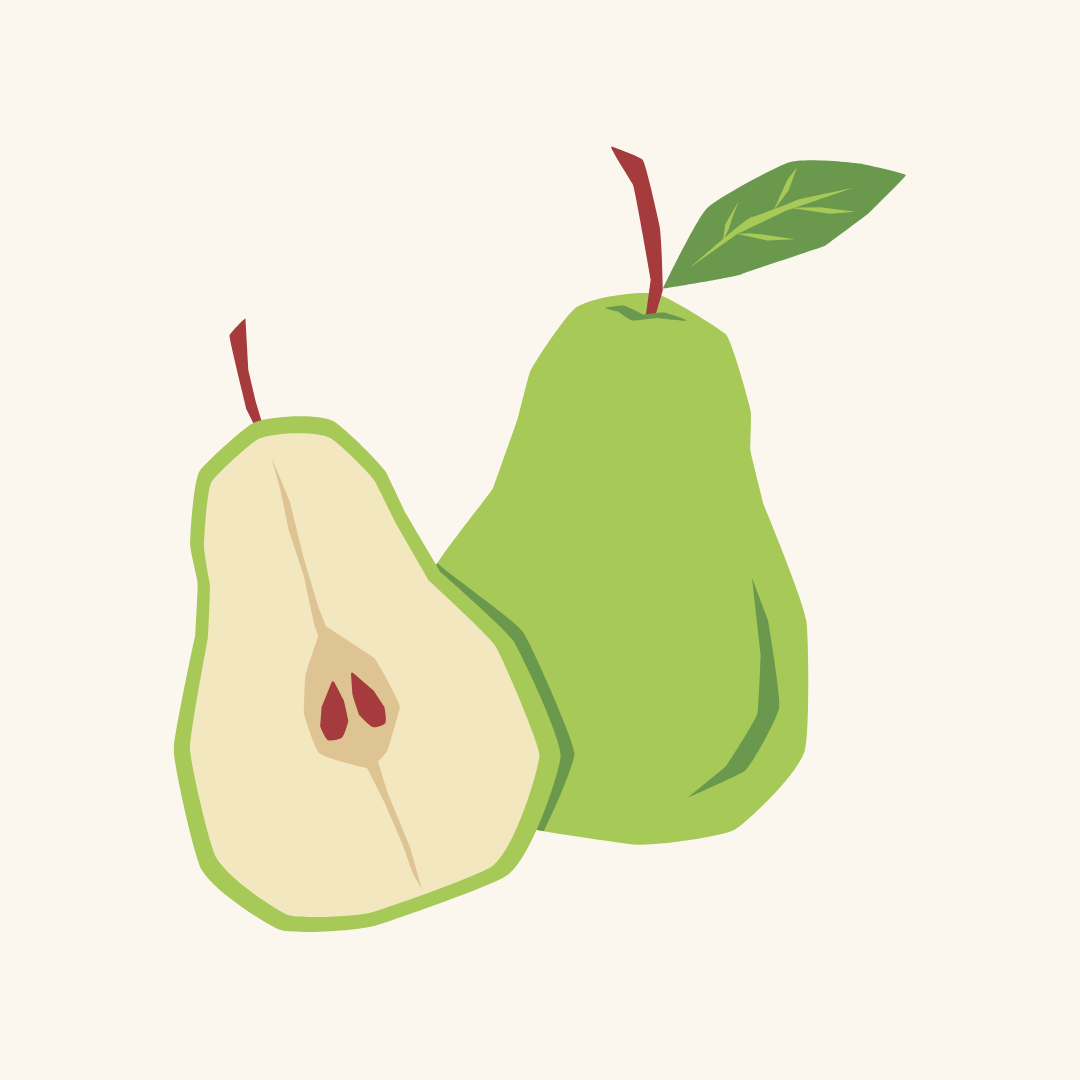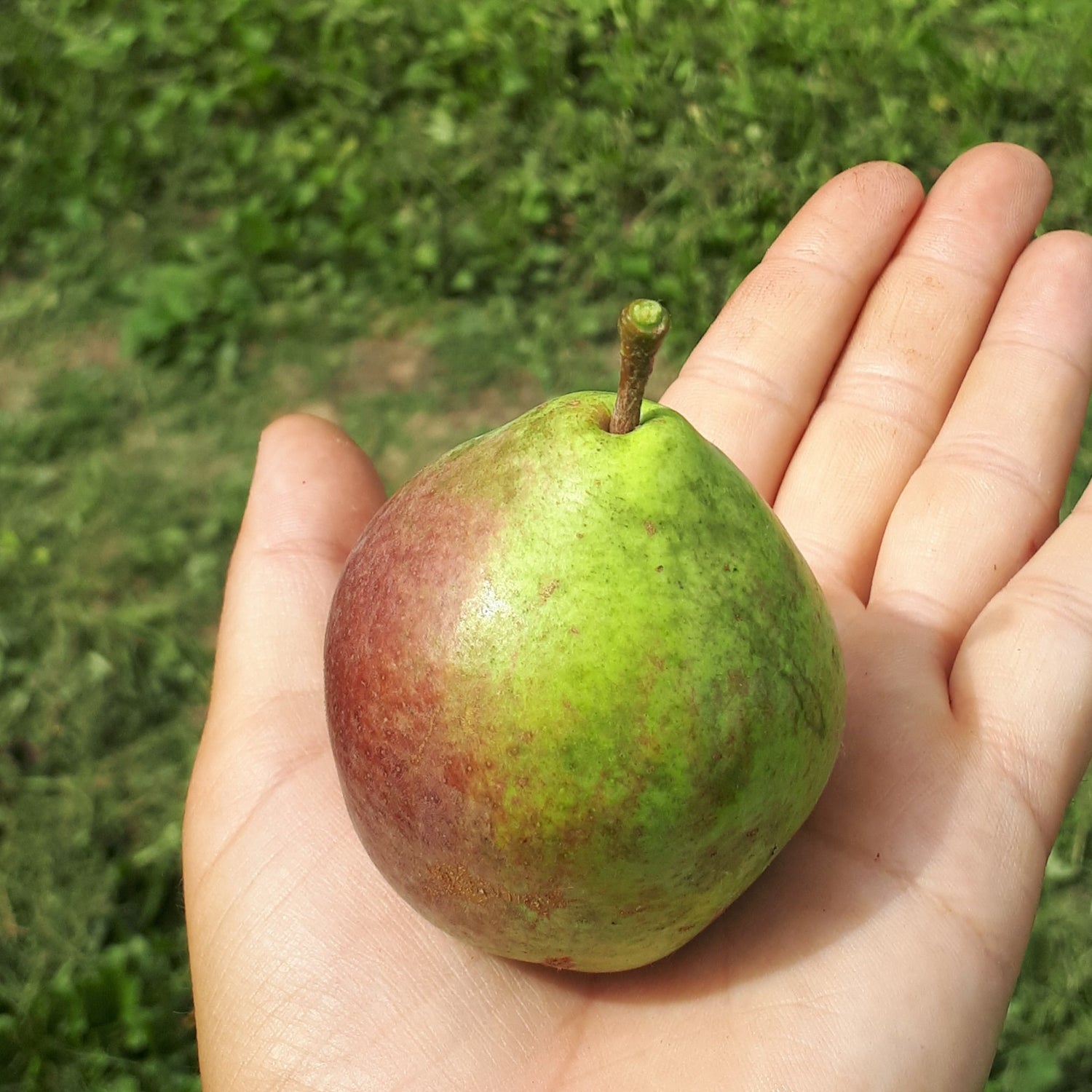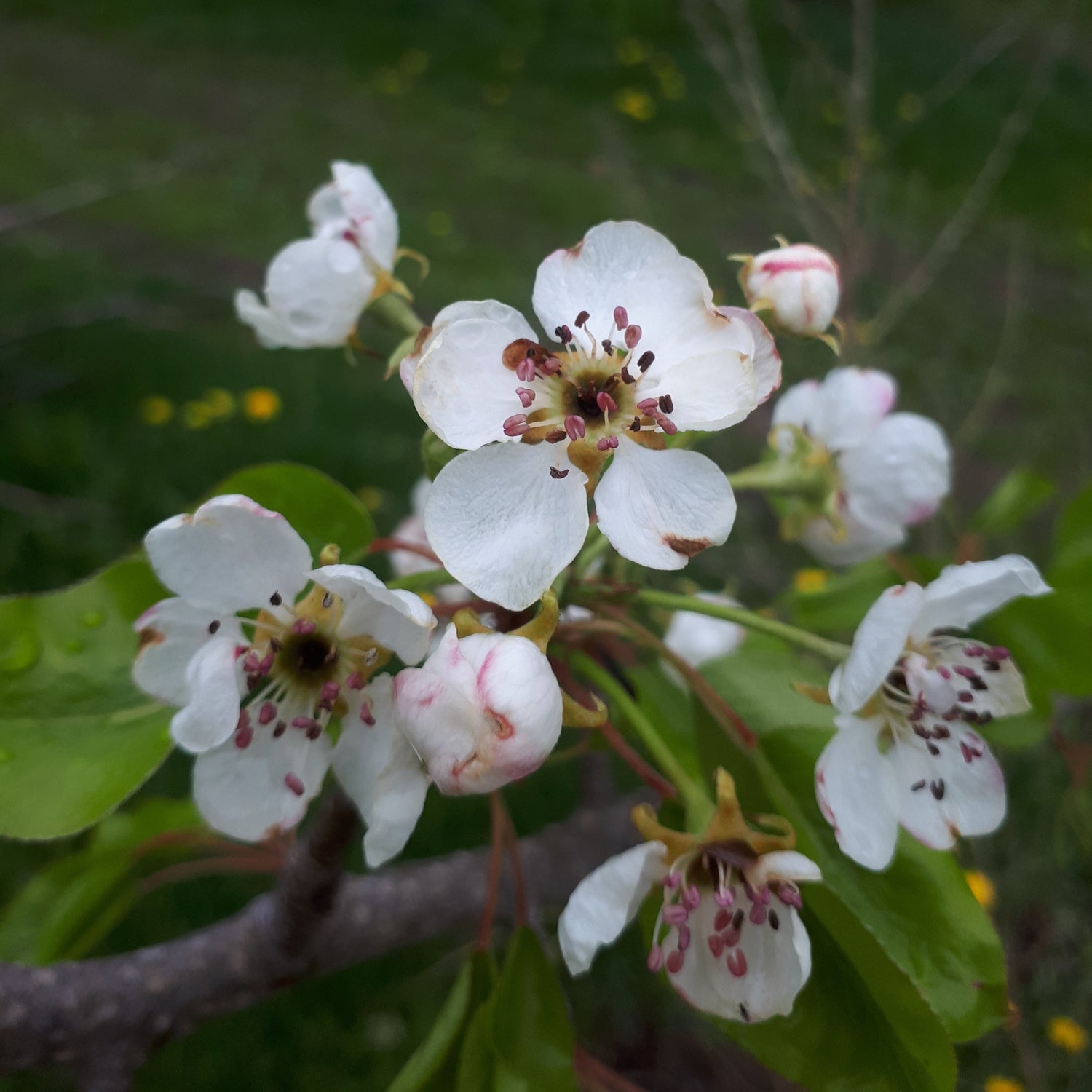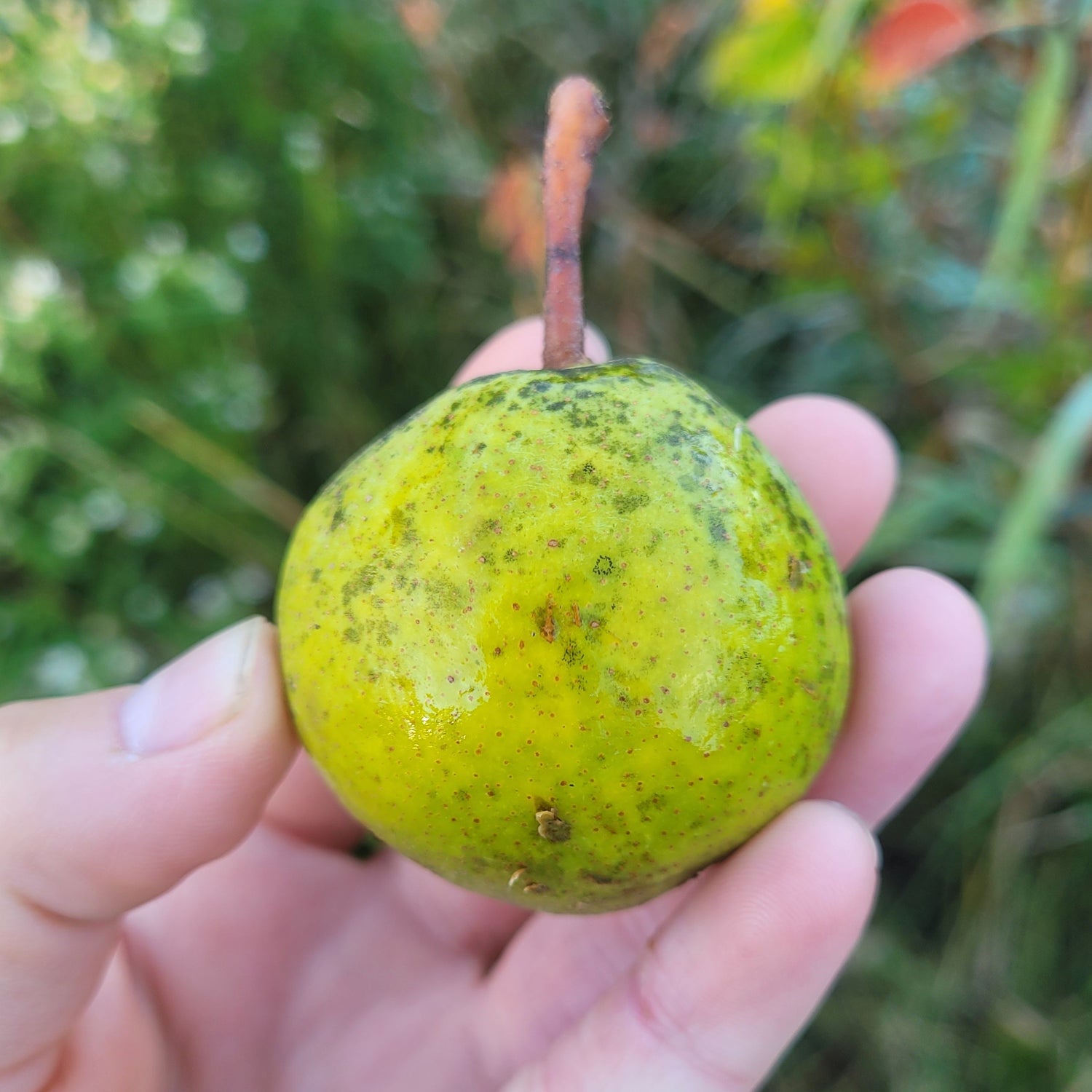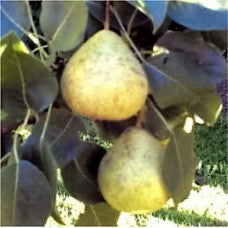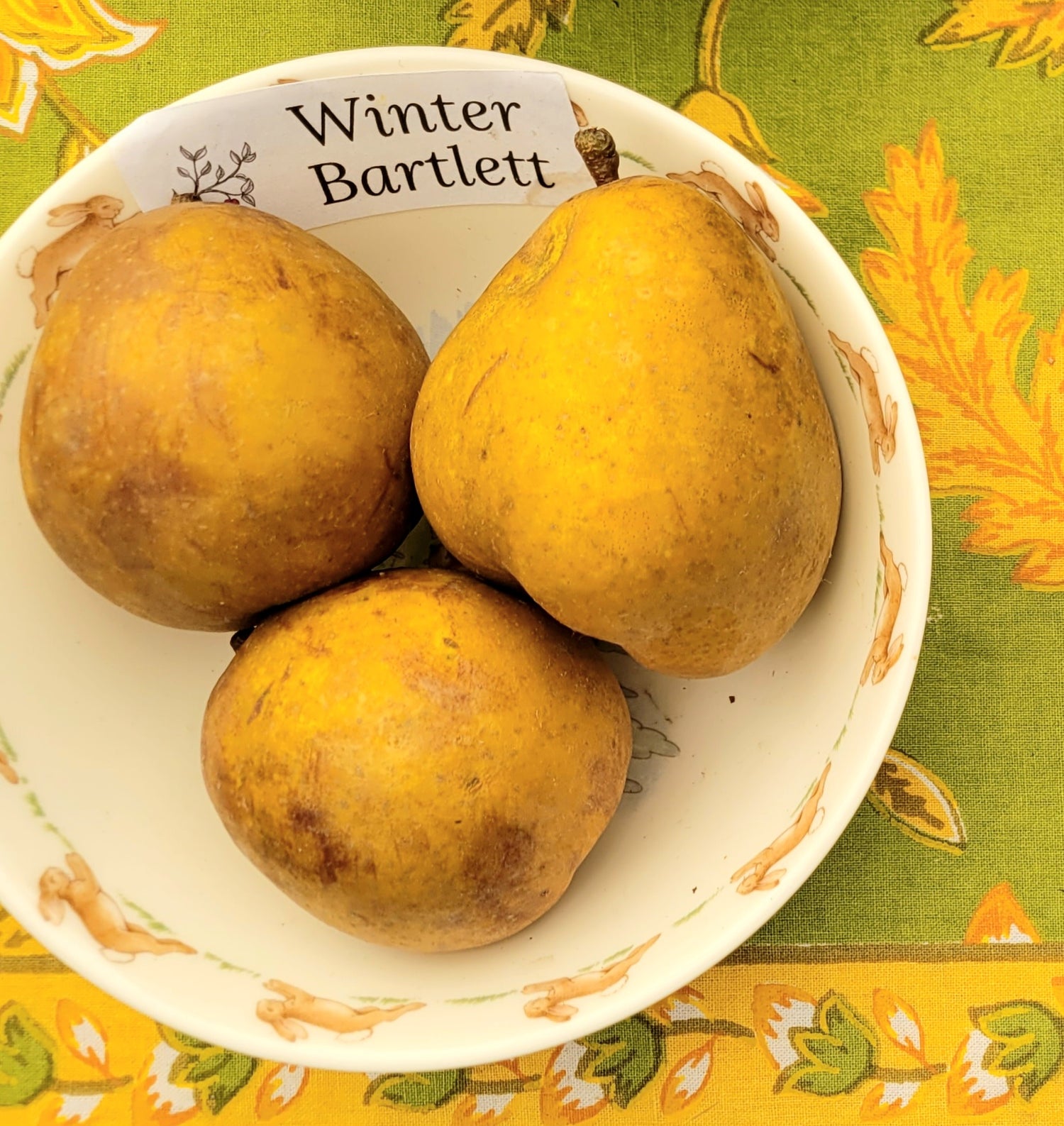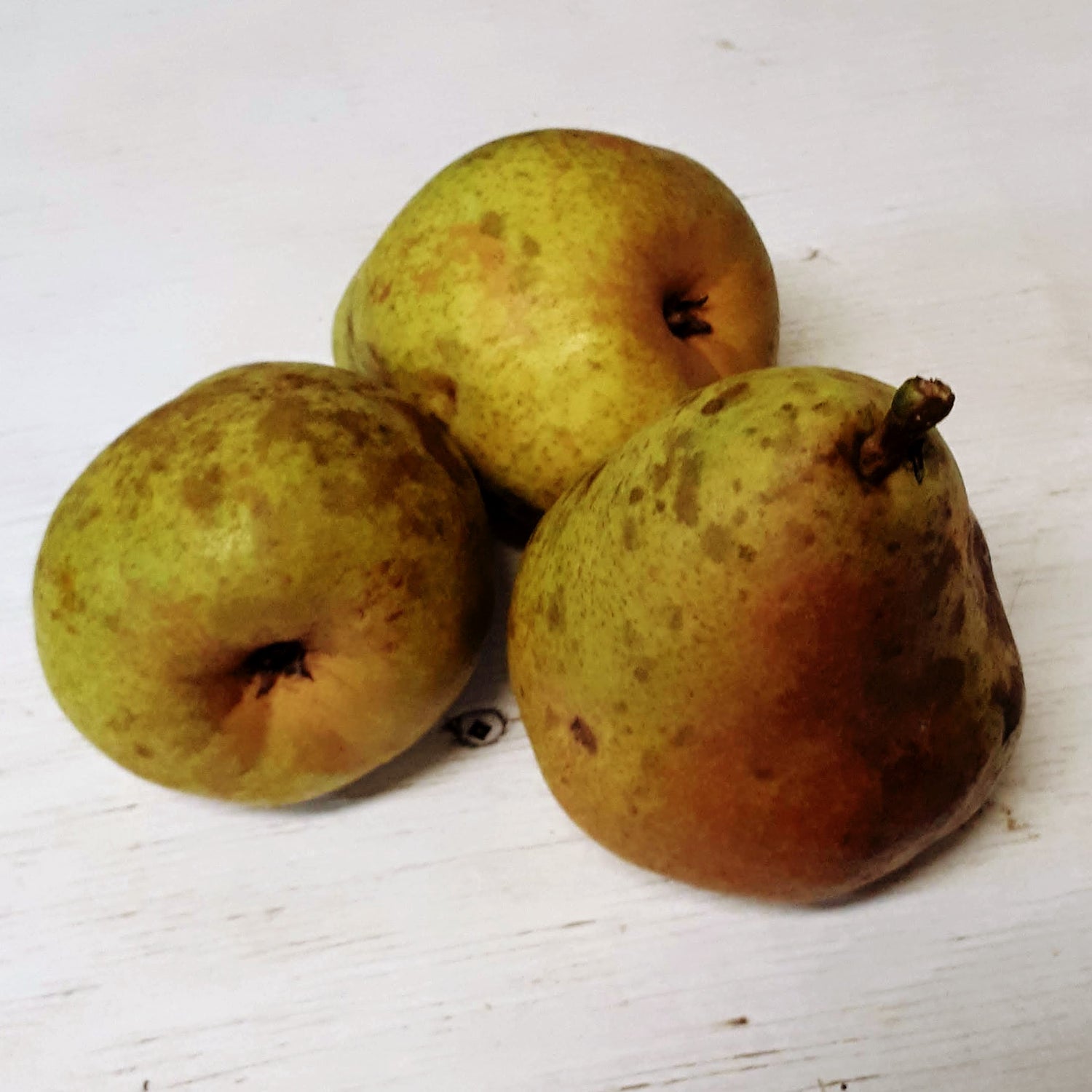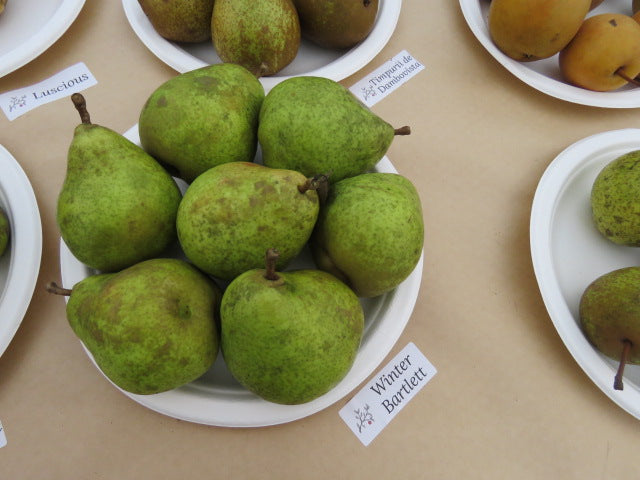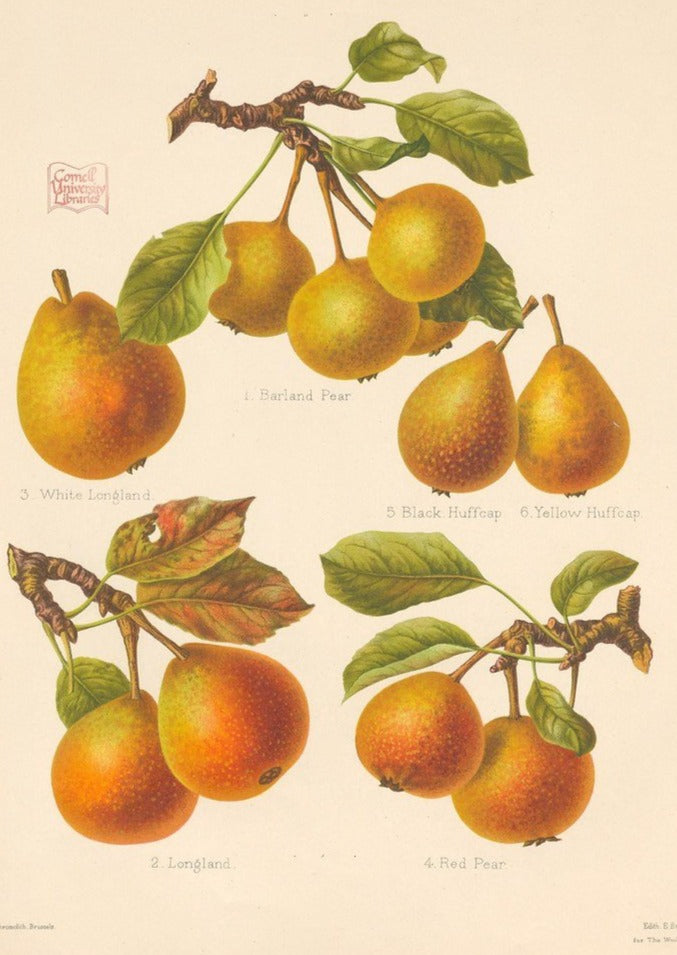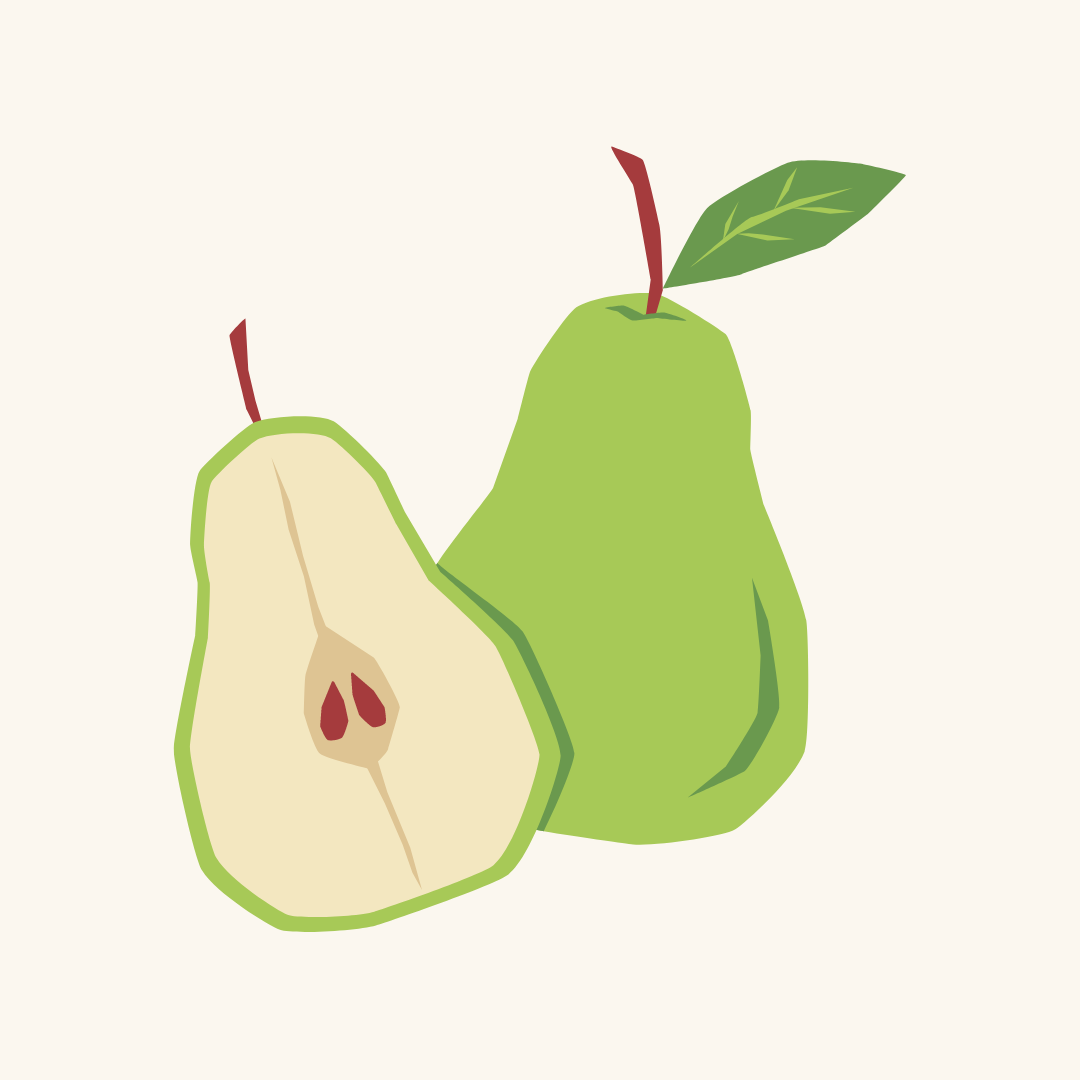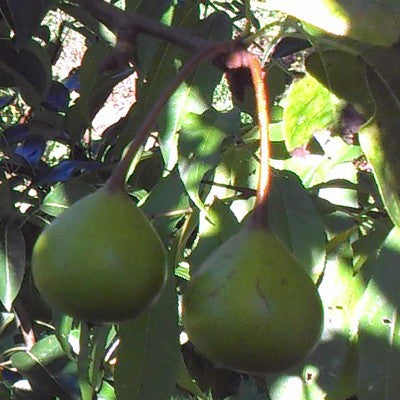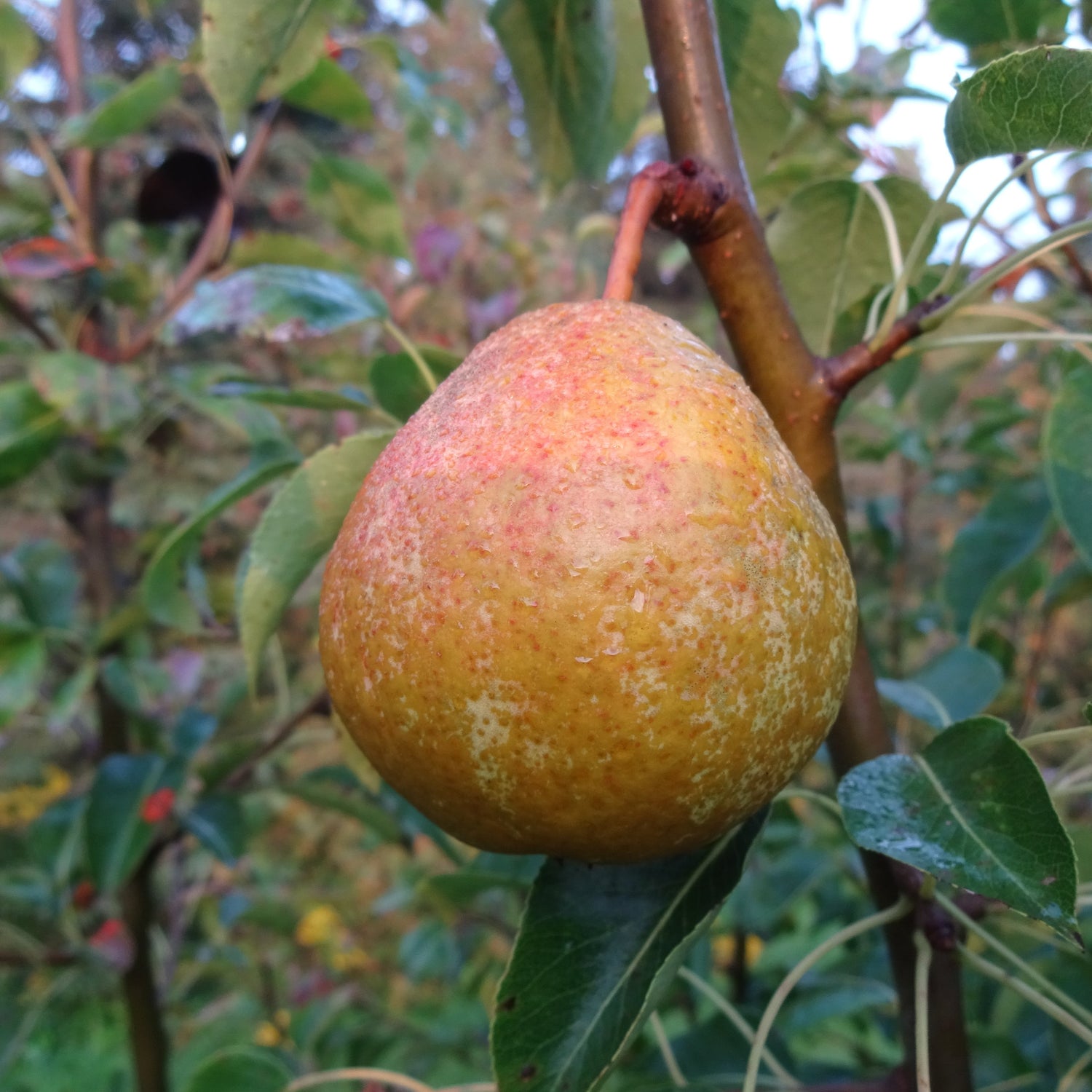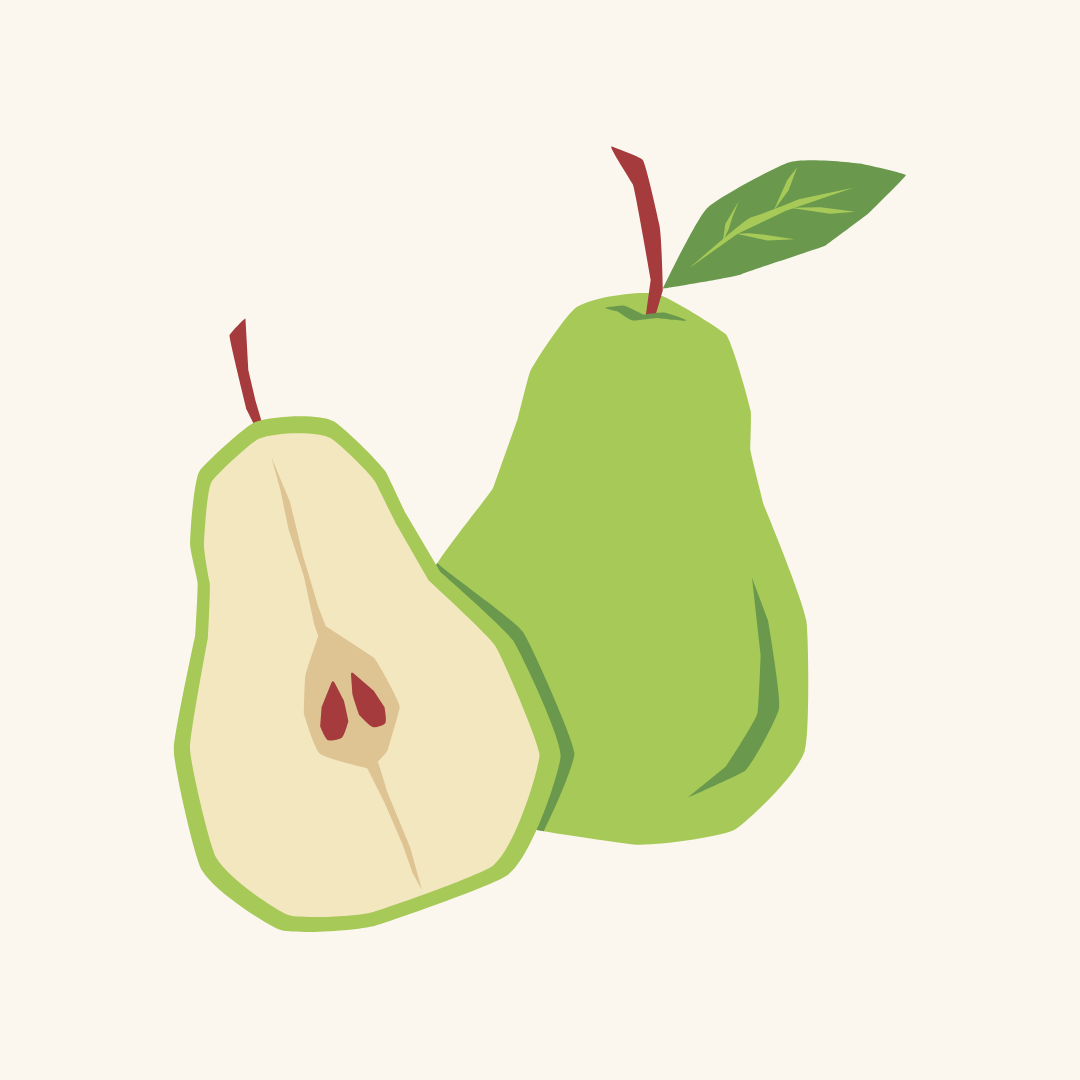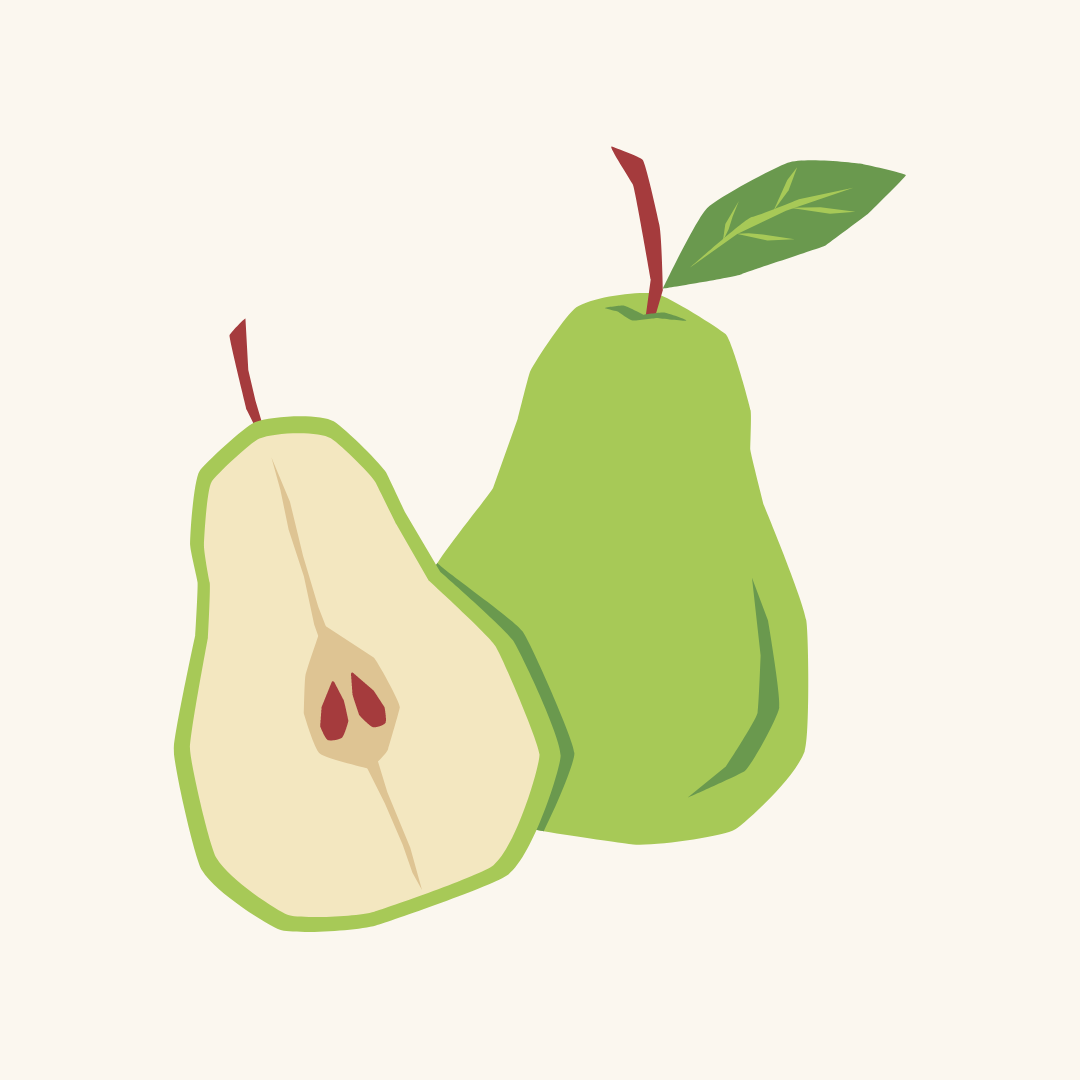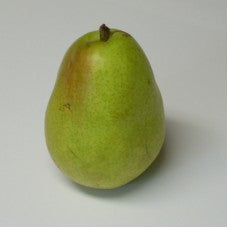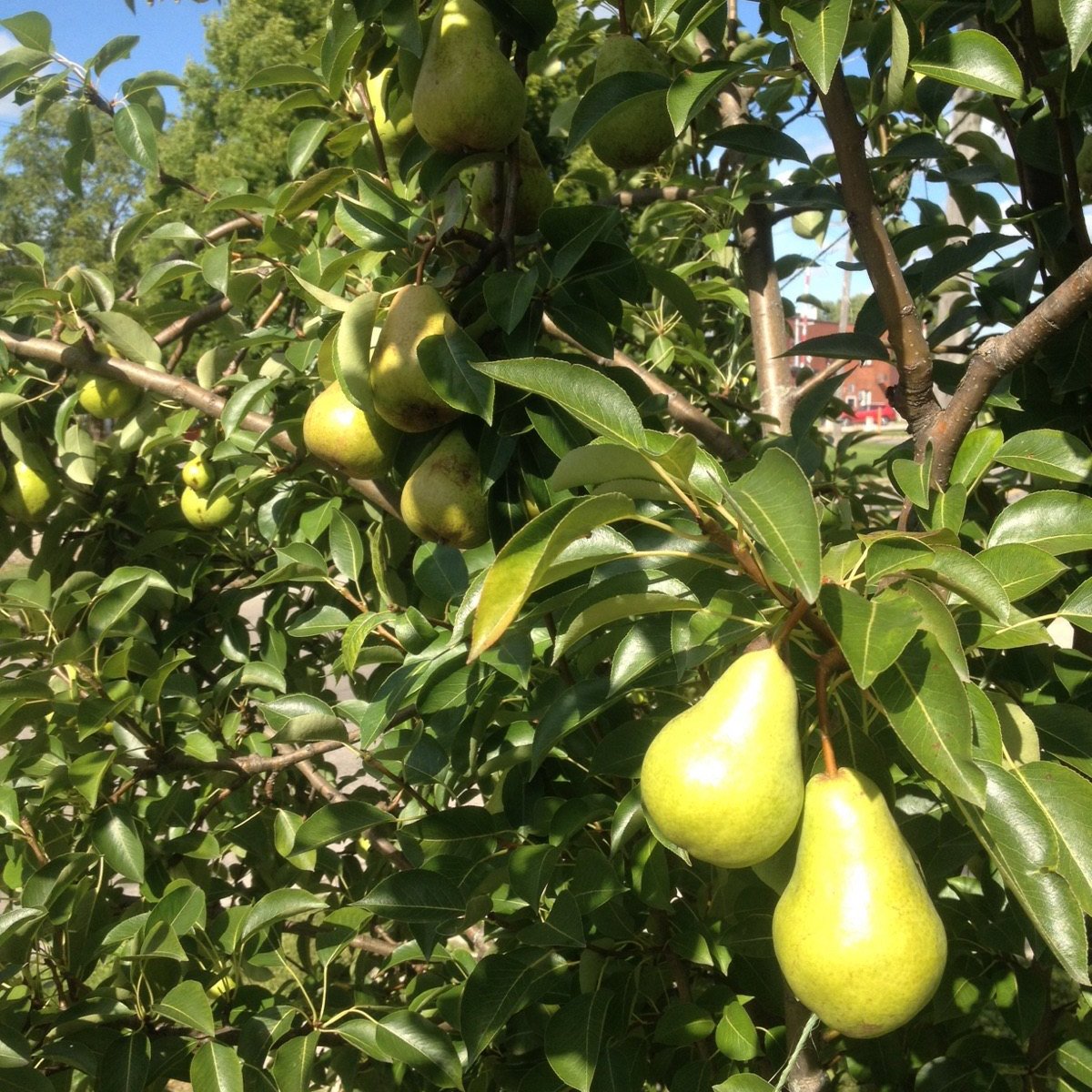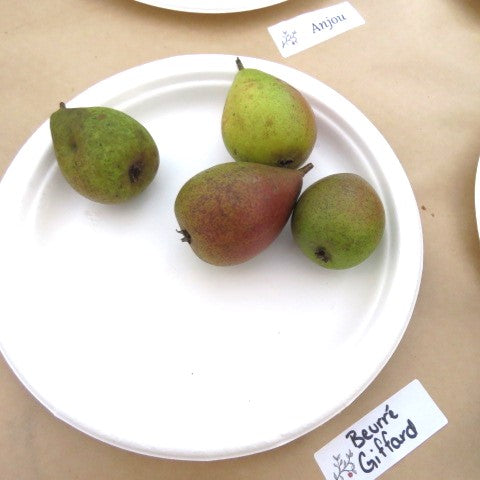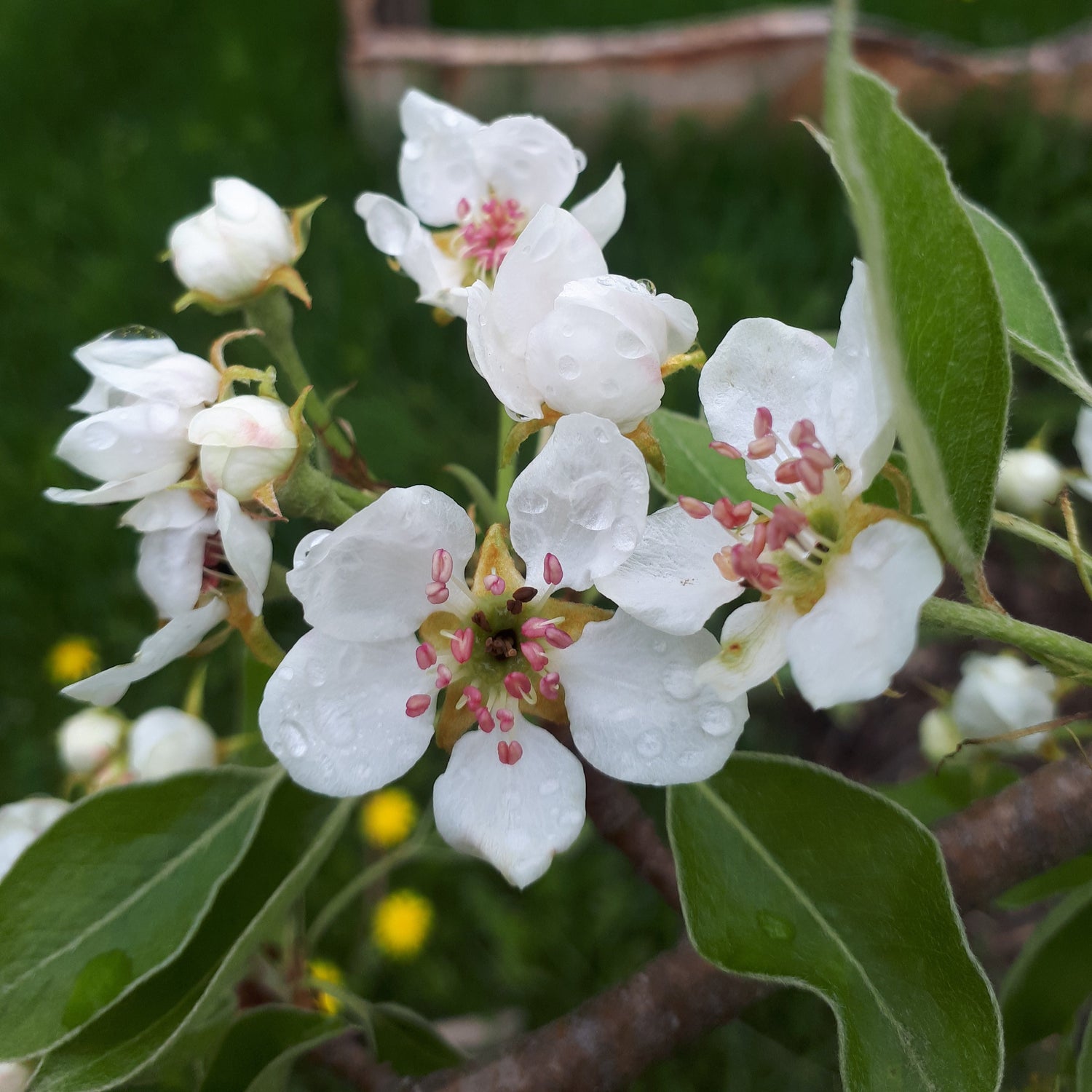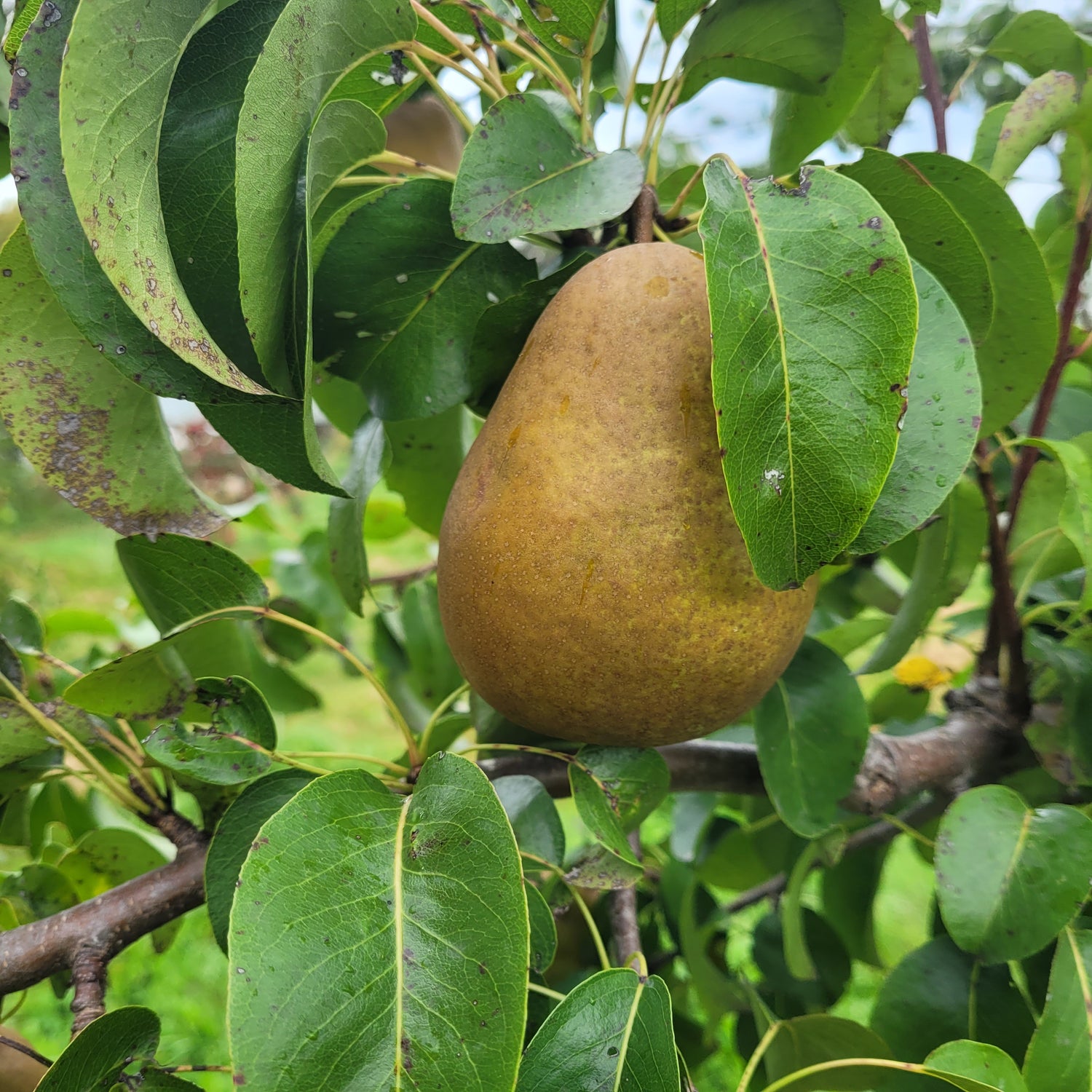Pear Trees
European Pear Trees
Pyrus communis
A pear tree is an excellent addition to the backyard or orchard. Although slow to start bearing, pears are hardy and reliable producers requiring less attention than other types of fruit trees. Each of these varieties requires a pollinator.
Asian Pear Trees
Pyrus pyrifolia
Resembling their more-familiar European cousins, Asian pears are distinct in their texture and mild flavour. The fruit is often larger, and sometimes round in shape like an apple. Each variety requires a pollinator.
Sort by:
35 products
35 products
History: The Passe Crassane pear originated in France where it was grown by Louis Boisbunel in 1845 and first bore fruit in 1855. It quickly became popular and was grown in France, Italy, and Spain and commonly exported to Germany and England. The stems were sealed with a red wax to keep in moisture during the pear's long ripening period which became a symbol of the variety. Although its susceptibility to blight has caused its popularity to decline since then, it is still grown on a small scale in parts of France and Italy.
Why We Grow It: This French winter pear is aromatic, floral, and fruity with a melting texture. It is best enjoyed after 4-5 months in storage, usually around February to March. Although the tree is hardy, it is susceptible to mildew and fireblight.
History: Ping Guo Li (translated from Mandarin as 'apple pear') was developed by Jilin Sheng in China and likely named for its round, apple-like shape. While its exact age is unknown, this pear is considered to be an old variety.
Why We Grow It: This Asian pear is nothing but sweet and juicy melting goodness! Its flavour is quite sweet and is comparable to that of a European pear. So far it has performed very well in our test orchard and displays good cold-hardiness.
History: The history of the Seckel pear is somewhat contentious. It was said to have been named after a Mr. Seckel who discovered the variety growing as a sapling near Philadelphia in the late 1700s or early 1800s. Some say it is the only commercial American pear since it was thought to have been a wild seedling but others believe the tree sprouted from a seed left by German immigrants. Either way, this lovely little pear is still grown on a small scale across the States as a specialty fruit.
Why We Grow It: Although it is small in size, this heirloom is popular for eating fresh due to its high quality flavour. The skin is ruddy green with a pronounced red blush and the flesh is very sweet with a spicy flavour, which is why it's sometimes called 'Sugar Pear.' Aside from being excellent for fresh eating, this pear is great canned, pickled, and spiced. As an added bonus, the tree is resistant to fireblight.
Customer Suggestion: One of our wonderful customers shared a recipe for Pickled 'Sickle Pears' (aka Seckel) that had been passed down from his great grandmother. We haven't tested it out yet, but Seckel pears, brown sugar, cinnamon, vinegar and cloves, cooked and marinated, then pickled sounds very intriguing! Thanks for sharing David!
Species: xSorbopyrus irregularis (Pyrus communis x Sorbus aria), also referred to as xSorbopyrus auricularis although this name is no longer correct
History: Shipova is a unique cross between European pears and Common Whitebeam* (Sorbus aria) which readily hybridizes with many other fruiting plants in the rose family. As a surprise hybrid, the history of Shipova is a little foggy. This cross supposedly appeared, or was perhaps planted, at Bollwiller Castle in France in the 1600s and was called Bollwiller Pear. It was cultivated in gardens in the late 1700s and early 1900s. It may have also originated in Yugoslavia and is popular in Eastern Europe today. Shipova was first brought to the US in 1959 and was imported from Yugoslavia. Today, it appears to remain something of a novelty in North America.
Why We Grow It: Shipova is a truly unique fruit tree and it is a shame that it is not grown more commonly. They are quite cold hardy and relatively disease-resistant. The trees produce clusters of small, round fruit that resemble pears. They are dense and crisp with a sweet flavour reminiscent of tropical fruits.
*Many places list Shipova as a cross between European pears and Mountain Ash. More precisely, the genus Sorbus is the Mountain Ash genus and the specific tree that is the parent of Shipova is the species Sorbus aria, commonly known as Common Whitebeam
History: Summercrisp pears were developed by the University of Minnesota in an effort to create a cold hardy pear. They were successful in creating a hardy and delicious pear, releasing the variety in 1985. Its name is derived from the fact it ripens in summer (very early for a pear!) and that it is great right off the tree when still crisp.
Why We Grow It: Summercrisp performs amazingly in our test orchard, producing lots of freckled beauties that ripen uniformly and hang well on the tree. This early cold-hardy pear has a really sweet, pleasant flavour and is not gritty or dry. The fruit are average-sized with yellow skin and red blush. For optimal eating they should be picked before fully ripe and stored in the fridge until eating. This variety deserves to be more widely planted.
History: Little is known about the origins of Taynton Squash. Its name is derived from the village of Taynton in England where it was discovered at the parish. It was possibly discovered at some point in the 17th century as writings on it from 1811 describe it as an old variety. It was noted at the time for producing an excellent perry although now it is considered rather average.
Why We Grow It: This ancient English perry pear produces 4-5cm round green fruits in heavy crops. They should be blet for two days at most before being turned into perry, of which they make an average quality single-variety perry.
History: Thorne was discovered in Gloucestershire, England, in 1670. It was originally grown for cooking and fresh eating but is now primarily used to make perry. It is still commonly grown for perry production in England today.
Why We Grow It: This is the most reliable of the English perry pears for Canadian growing. Although this pear can be eaten fresh, it packs an astringent punch and is best made into a good perry instead.
History: Winter Bartlett pears originated on the western coast of the United States, likely in Eugene, Oregon. They were introduced by D.W. Coolidge in 1880 but it is believed the variety may have existed for some time before that. It earned its name from it's resemblance to the Bartlett pear in taste and shape and it's designation as a winter pear.
Why We Grow It: As opposed to summer pears which are meant to be eaten shortly after picking, winter pears are supposed to be allowed to ripen for months in cold storage and enjoyed during later seasons. It is worth the wait for this variety, which produces a medium to large fruit with golden-yellow skin covered in patches and dots of russet and red streaks. It has a sweet and slightly subacidic flavour paired with firm, coarse, juicy white flesh. It is also great for cooking.
History: Although its exact origins are unclear, it is believed that Barland comes from Bosbury in England. It was already well known by the late 1600s and its perry was believed to have medicinal properties. This perry pear has stood the test of time and is still widely grown in the UK.
Why We Grow It: Barland remains one of the most popular perry varieties. This bittersharp perry pear can be made into a good single-variety perry or added into blends.
History: Blakeney Red (aka Circus pear, Red pear, and Painted Lady) is believed to have originated in the English village of Blakeney, its birthplace and the prominent red blush on the fruit earning it its name. It may have been originally planted sometime in the 1700s but became better known starting around 1830 and was the most widely planted perry pear. It is still popular in the UK today and is gaining attention in North America as well. A yellow dye can also be made from this variety and it was used to dye khakis for British soldiers during WW1.
Why We Grow It: This perry pear produces small to medium yellow fruit with red blush and some russet. For those interested in perry, it's hard to ignore this variety's long history, although its quality can vary based on growing conditions.
History: Gin pears were first recorded in England in 1886. It was said the perry made from this pear had a juniper flavour, hence the name 'Gin.' It it still quite popular in parts of England.
Why We Grow It: The small fruit of this pear are used chiefly for perry, producing a good quality juice of medium tannins and acidity. The harvested fruit can be kept up to a month until pressing.
History: Luscious was developed at South Dakota State University as a cross between Ewark and South Dakota 31 in 1954. This goal was to create trees suitable for areas like the Northern Great Plains. Luscious was introduced in 1973, likely selected for its cold-hardiness and excellent flavour.
Why We Grow It: Luscious produces small to medium yellow fruits with an attractive red blush. The fruit is quite sweet, great for fresh eating and cooking/baking! This is an excellent option for fans of Bartlett who are looking for a versatile and cold hardy variety! Luscious also has value as an ornamental tree, producing white blooms and glossy green leaves that turn a nice red in the fall.
History: Little is known about this variety aside from the fact it originated in France and was widely grown in Austria. It has historically been popular in both countries. Its name translated from German means Normandy Cider Pear, which may point to its place of origin or at least where it was most popular in France.
Why We Grow It: Normannischen-Ciderbirne produces small, russeted pears that are a greenish-yellow. The fruit produces high quality juice for perry.
History: Winnal's Longdon was raised by a Mr. Winnall in the parish of Weston-under-Penyard, a village in England, around 1790. Despite being named after Winnall, Winnal's Longdon is now commonly spelled with only one 'L' after it was recorded incorrectly in the 1920s. This pear is still grown in small quantities in England.
Why We Grow It: This old English variety is a high quality perry pear. It was blended with Hendre Huffcap to form a perry which won the Long Ashton Perry competition many years in a row. The tree is known for its vigorous growth, heavy crops, and high resistance to scab which make it quite suitable for organic production.
History: Barnet's history is somewhat of a mystery although we know it likely originated in Gloucester, England in the 1800s and was distributed by the Long Ashton Research Station in the 1900s. It is a traditional perry pear that is known by many names including Barn, Brown Thorn, and, adorably, Hedgehog. The last name is speculated to come from the fruit's resemblance to baby hedgehogs (aka hoglets) nestling in the grass.
Why We Grow It: Barnet produces small, brown russetted fruit that are quite juicy. The juice is quite mild since it is low in both tannins and acidity, making it a good choice for adding to perry blends. The ripe fruit is easily shaken from the tree for ease of harvest.
Collections
Pyrus pyrifolia
Asian pears are wonderful low maintenance trees! They are regular, prolific producers in our test orchards. Asian pears, sometimes called Apple Pears, are crunchy and sweet, with a mild flavour. While some pears are partially self fertile, we recommend planting at least two different cultivars for reliable pollination; European and Asian pears do cross pollinate.

